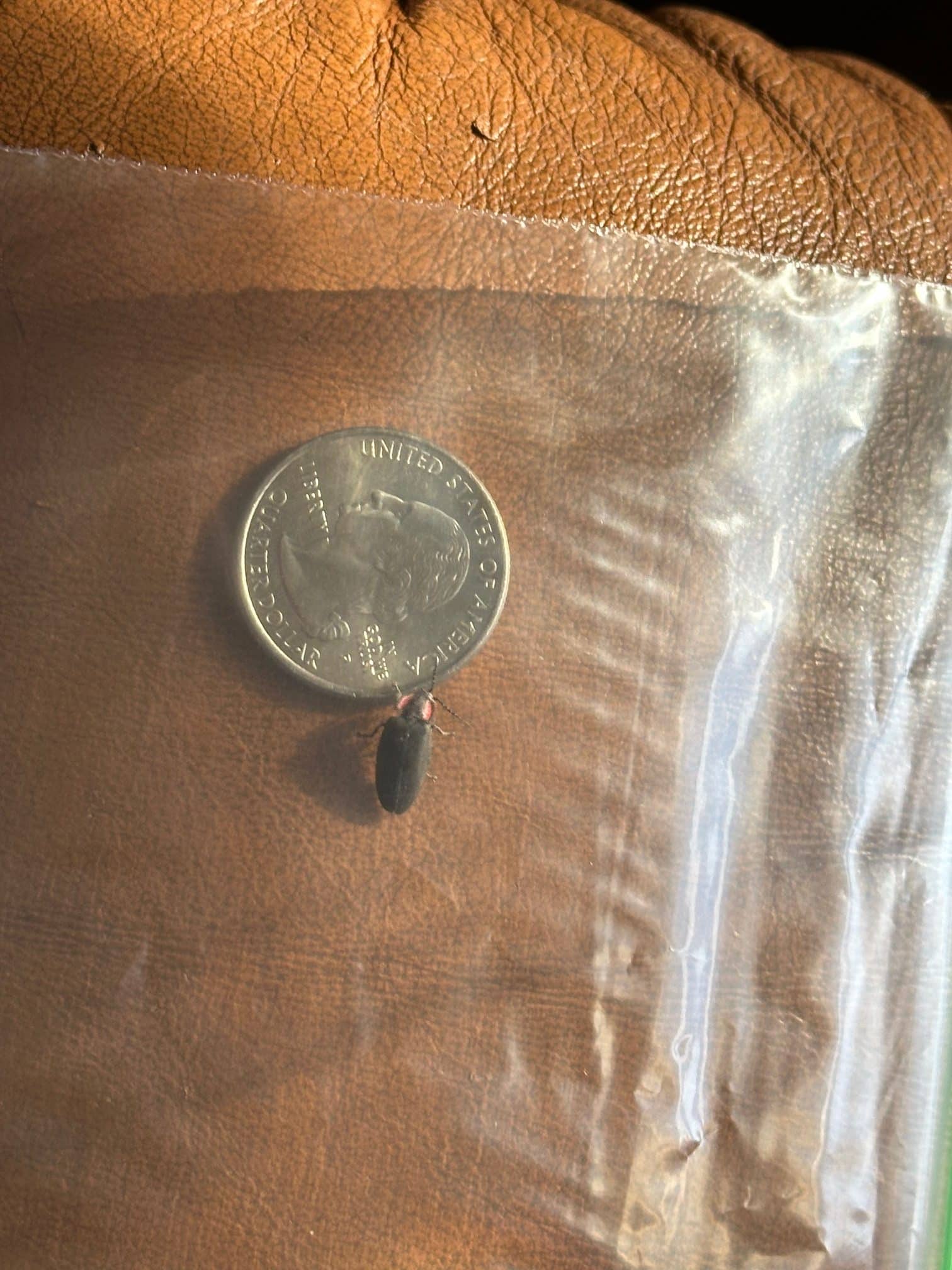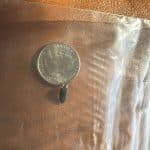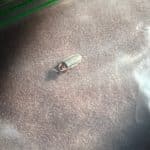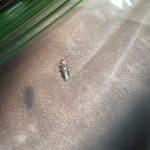Notice: Below is a list of 0 important links included on this page.
Please note that while screen readers have made significant strides, they may still lack full support for optimal web accessibility.




You must be logged in to post a comment.
This is a project of the Xerces Society, working in collaboration with the IUCN SSC Firefly Specialist Group and New Mexico BioPark Society.
Copyright © 2025 The Xerces Society •1631 NE Broadway Street, #821 • Portland OR 97232 USA
Nice observation– thank you for submitting! Based on the broader body-shape, this is a Photinus (formerly Ellychnia) rather than a Pyropyga.
Based on the location and the markings on the pronotum, I think the most likely species is Photinus irroratus, though Photinus alexanderi and Photinus corruscus are other possibilities. Your firefly appears to be about 12 mm long (based on the photos with the quarter), and P. alexanderi usually don’t exceed 10 mm. I believe we’d need to examine the pronotum more closely to confirm P. irroratus. P. irroratus has a granulated pronotum, meaning that there are sand-like bumps on the surface.
If you haven’t checked it out already, Anna Walker’s PDF Guide to Fireflies of the Southwest is a great resource.
Thanks again for submitting this observation!